Irrigation systems for crops
In this opportunity I bring you an important topic such as: "Irrigation systems for crops", this is one more contribution for STEEMCHURCH FARMS (@Farms).
Before starting a crop, it is necessary to choose the irrigation method to be used, for this it is necessary to take into account, the climatic conditions, the characteristics of the soil and the type of plants to be cultivated. There are different types of irrigation but your choice will depend on the source of water that is available, because each irrigation system will require from a minimum amount of water to large volumes of water.
In the past, farmers sowed taking into account the different seasons of the year, so the type of crop would depend on the amount of rain that the crop would need, because generally in those times the workers of the field sowed counting on the rains, and Many times, they were affected by the variations of the rainy season, when it was not raining enough to maintain their crops and at other times due to the severe drought.
Over time all these problems were solved, where the farmer began to irrigate their crops with water from lakes, drilled wells, rivers and ponds and with the use of motor pumps of different powers to supply water at high pressure; On the other hand, to minimize the environmental impact over time, different irrigation systems were adapted, which consist of supplying the necessary amount of water to the crops through artificial methods.
nowadays the most used irrigation is: the gravity irrigation which is the traditional and most used, sprinkler irrigation, drip, pivot and flood.
Irrigation Systems for crops
Risk by gravity:
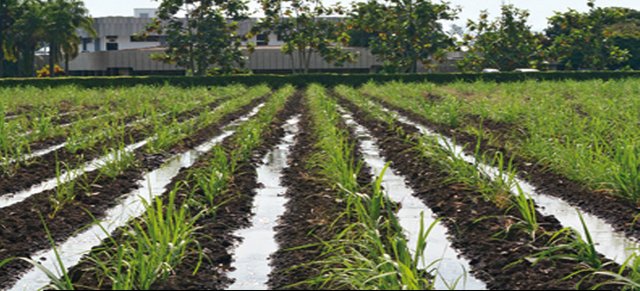
Source
This is an economic system and more used, where water is captured and distributed with the energy generated by the height differential between the catchment point and the irrigated area. The main characteristic of gravity irrigation is the way to distribute the water in the soil, the water can reach the plot by means of any distribution system, either by pipes or by a network of channels and ditches where the water circulates by gravity , to later feed the furrows or secondary channels where the plants are distributed to the side, which is known as the ridges or ridges.
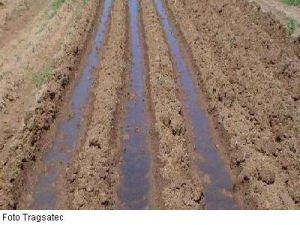
Source
Disadvantages of gravity irrigation
For this system to work, the land must have moderate slopes, which is why the surface tends to be affected by flood and salinity if an adequate drainage has not been foreseen; On the other hand, this system tends to wash the soil a lot, which can cause nutrient losses due to leaching and soil erosion losses.
Sprinkler irrigation
This is an irrigation method where water is applied to the crop in the form of rain using water emission devices, called sprinklers, which generate a spray of water sprayed in drops; For this, a water source is required, whether from ponds or drilled wells, this system requires a lot of pressure to move the sprinklers.
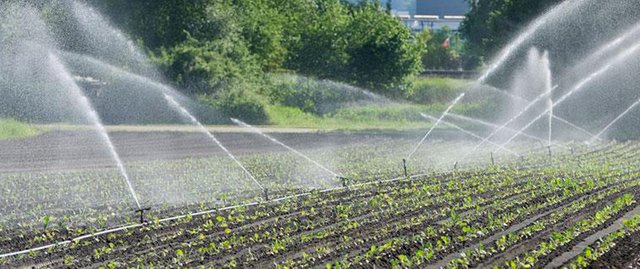
Source
The water comes out of the sprinklers equipped with pressure and these are installed in a network of pipes, from the main ones that distribute the water to the secondary pipes and pipes called spikes where they are placed, the sprinklers whose complexity and length depends on the size and the configuration of the plot to irrigate.
Therefore one of the fundamental characteristics of this system is that it is necessary to provide water pressure at the entrance to the irrigation plot, which is done using an appropriate pumping system.
One of the advantages of this system is that it wet the plot uniformly without having problems with the unevenness or topography of the land and on the other hand, can be controlled in an automated way, with labor savings.
Disadvantages: One of the disadvantages of this system is the costs of materials and equipment, (high pressure pumping equipment, water filters, pipes and sprinklers).
Drip irrigation systems or localized irrigation
Drip irrigation or drop by drop irrigation is an irrigation method that allows an optimal application of water and fertilizers in the agricultural systems of arid zones. The applied water infiltrates the soil, directly irrigating the area of root influence through a system of pipes and emitters.
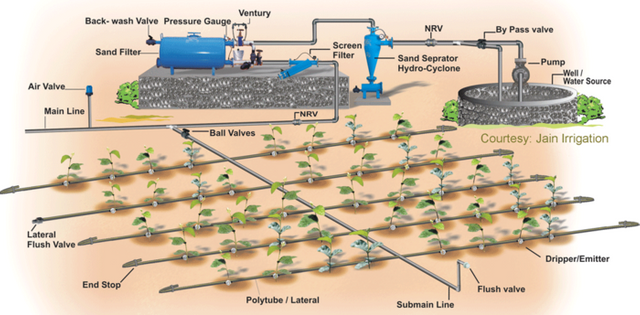
Source
Advantages of drip irrigation:
- It significantly reduces the evaporation of water in the soil.
- It allows to completely automate the irrigation system, with the consequent savings in labor. The control of application doses is easier and more complete.
- Due to the maintenance of high humidities in the bulb made by the emitters, it allows the use of more saline waters for irrigation than the systems of irrigation by surface and by aspersion.
- It has an easier adaptation in irregular, rocky terrains or with steep slopes.
- Reduce the proliferation of weeds in non-irrigated areas
- Through this system, nutrients are supplied in a controlled manner in the irrigation water without loss by leaching with the possibility of modifying them at any time of the crop, that is, it is the system most adapted to the FERTIRRIGATION.
One of the disadvantages of this system is the cost of materials and equipment, compared to other irrigation systems, but in the long run, it is worth the investment. Pumping equipment is required to supply the proper pressure and flow to the installation. In addition, equipment for water filtration, Subscriber dosing system, Pipe network and connections.
Pivot irrigation system
This irrigation system consists of bringing the irrigation water to the crops through a metal pipe, usually galvanized steel or aluminum, which is mounted on metal towers that move on sets of wheels, so that the pivot rotates in circles keeping one of its ends fixed in the center of the field. Sprinklers hang all along the pipeline, distributed according to the requirements, whose irrigation heads can be located at distances
soil variables.
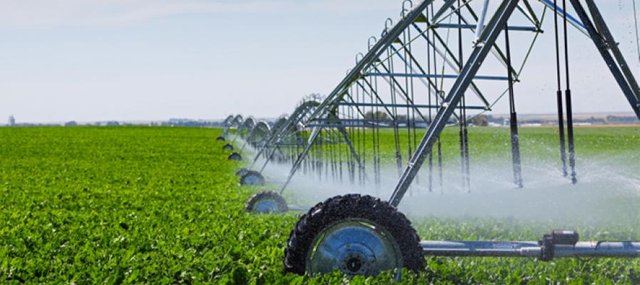
Source
Advantages of Pivot irrigation:
Analyzing irrigation by the pivot system, we can find the following advantages: energy expenditure is reduced between 20% and 30%, proven crop increase of 15% on other systems, irrigation uniformity of 95% and lower vulnerability to the wind. The instantaneous flows are much smaller, thus eliminating the peaks of demand. There is a better response of the plant to daily irrigation, which has a greater capacity to temper homogeneously. It gives the possibility of attending specific demands to the crop, according to the climatology. It allows the creation of a microclimate in crops. It helps the defense] against plagues, thanks to the creation of a climate inhospitable to them. Source
Flood irrigation systems
Flood irrigation consists of flooding the land with a layer of water, the land must be level, this system is also called manta irrigation or irrigation on foot, which is mainly applied to rice crops. In order to apply this system, the land must be worked in such a way that the areas to be irrigated, or part of them, must be practically horizontal, surrounded by small dikes containing the water.
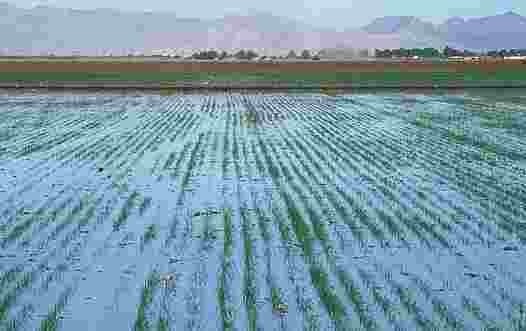
Source
This system has some advantages, it is very simple and easy to establish, it is also inexpensive when you know
take advantage of the natural, favorable circumstances of your plantation.
Hello oscarcede!
Congratulations! This post has been randomly Resteemed! For a chance to get more of your content resteemed join the Steem Engine Team
Upvote this: https://steemit.com/free/@bible.com/4qcr2i
Very descriptive article. Thanks for sharing into steemit.